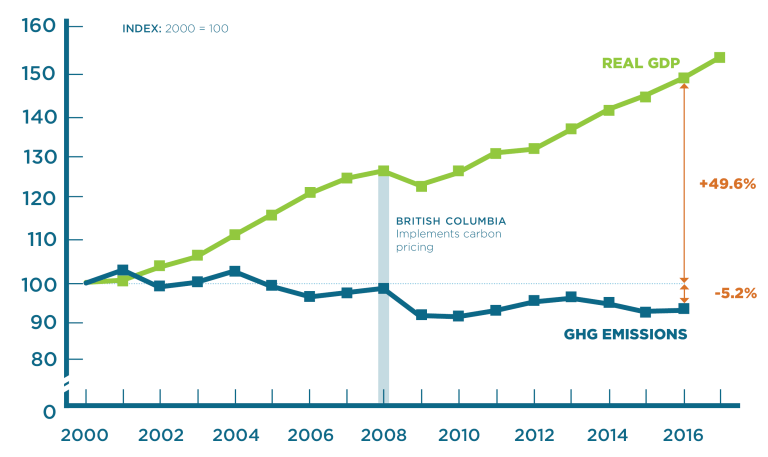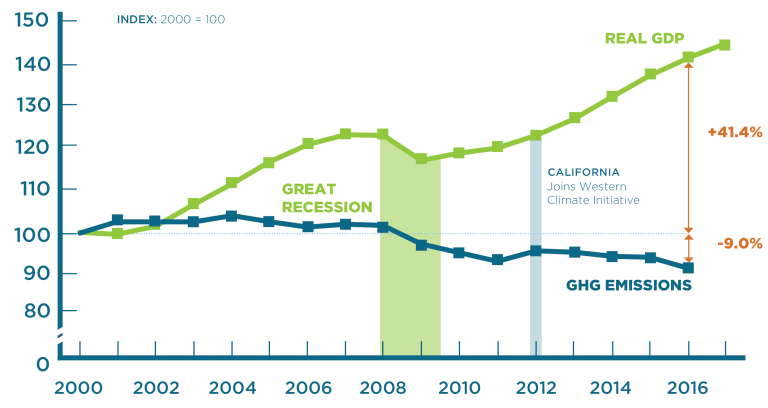Emissions in the US were reported to have risen by 3.4% this year, the largest increase in eight years. For years, it appeared that the U.S. had joined dozens of countries around the globe who had successfully decoupled emissions and economic growth. This year however, emissions increased from industry, planes, and freight. So what are examples of jurisdictions that have been successful at decoupling emissions and economic growth, and where does Vermont stand?
Our neighbors in Quebec, British Columbia, and California that have instituted economy wide carbon policies have seen dramatic economic growth while also reducing emissions below 2000 levels – demonstrating that their policy implementation has not negatively impacted economic growth.
You are welcome to use these graphs, as long as you attribute them to Energy Action Network. Right click on any image to save it to your computer, or scroll to the bottom to share the whole page on social media.
British Columbia has successfully decoupled GHG emissions and economic growth (2000-2017)
Quebec has successfully decoupled GHG emissions and economic growth (2000-2017)
California has successfully decoupled GHG emissions and economic growth (2000-2017)
Vermont’s GHG Emissions and GDP dipped between 2007-2009 during the Great Recession. For a few years during the economic recovery, Vermont’s GHG emissions remained flat, but recent years have brought a significant increase.
Has Vermont decoupled emissions and economic growth? (2000-2017)

Sources:
Quebec & British Columbia: Emissions: Environment and Climate Change Canada, GHG Emissions by Province and Canadian Economic Sector, 1990-2016; GDP: Statistics Canada, NWT Bureau of Statistics
California: Emissions: California Air Resources Board Greenhouse Gas Inventory (2016), GDP: Federal Reserve Economic Data
Vermont: Emissions: 2018 Greenhouse Gas Emissions Inventory Brief (1990-2015), VT Agency of Natural Resources. GDP: Federal Reserve Economic Data.


